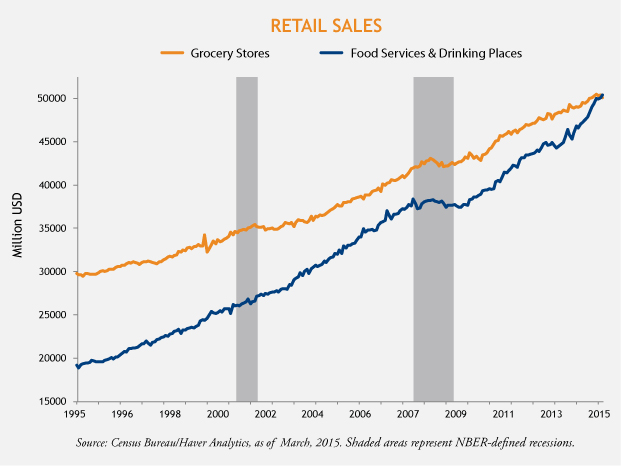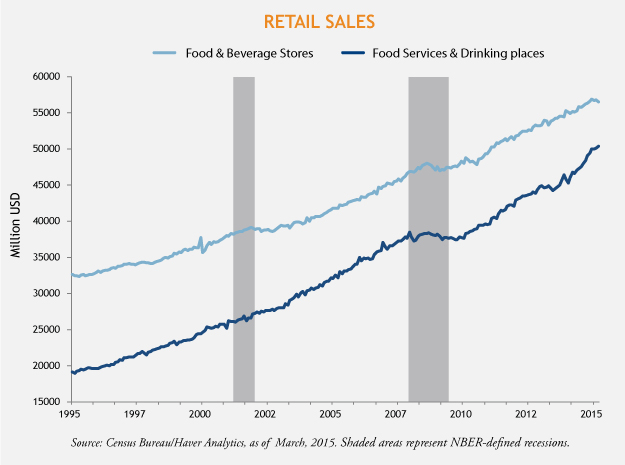A very interesting detail from April's retail sales report – for the first time in US history, consumer spending at restaurants and bars exceeded spending at grocery stores. In March, Americans spent $50.4 billion in restaurants and bars versus $50.1 billion in grocery stores.

I’ve read many arguments that this signals a major generational shift taking place. It is true that the share of income going to eating out is higher for millennials than older generations. But hasn't it always been true that younger people go out more than older people?
The millennial generation is huge – larger than the baby boom generation – and its sheer size is attracting the attention of businesses of all kinds, especially restaurants. Better quality and more diverse fast food options are popping up all over the country to assuage the young, but demanding millennial palette.
But this theme is missing a key variable – alcoholic beverages.
The broader category in the retail sales report is "food and beverage stores," which includes not only grocery stores but also stores selling wine, beer, or liquor for home consumption (after all, they are groceries of a sort!). Once you combine grocery and alcoholic beverage purchases for consumption at home, you can see that spending on eating and drinking in still exceeds spending on eating and drinking out. However, the margin is shrinking, and by the end of the decade, eating and drinking out is likely to exceed eating and drinking in.

I can only speculate about the reasons behind this convergence. I suspect one major reason may be the rise of two income households over the last few decades. We know that families today tend to be smaller and married women are far more likely to work outside the home. The result is that household incomes are higher but time is more squeezed, prompting families towards the convenience of prepared food, either in a restaurant or “take out." Another social development on the rise is single person households, the result of delayed marriage, the decision not to marry, or divorce. I suspect that many “singletons” feel more inclined to eat out than at home, compared to family households.

MALR013257






